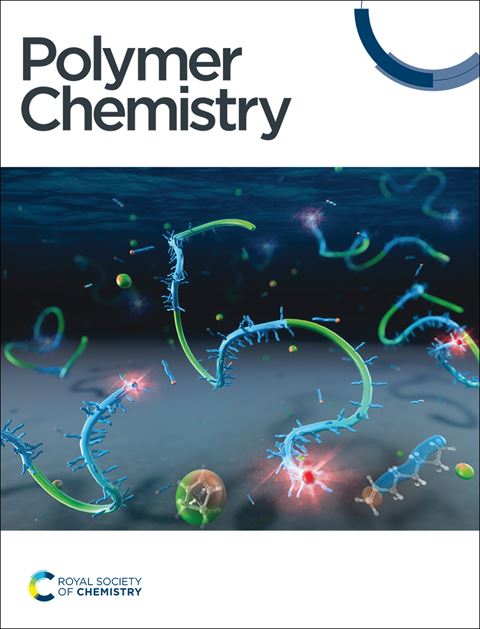Design, synthesis and applications of thermosensitive linear poly(ether amide)s with unconventional cluster luminescence and tunable LCST
IF 4.1
2区 化学
Q2 POLYMER SCIENCE
引用次数: 0
Abstract
The design of stimuli-responsive polymers with both tunable lower critical solution temperature (LCST) and unconventional cluster luminescence represents a significant challenge in materials science. In this study, thermosensitive linear poly(ether amide)s with cluster fluorescence and LCST tunability were prepared via phosphazene base (t-BuP2)-catalyzed oxa-Michael addition polymerization of N,N'-methylene-bis(acrylamide) (MBA) with diols containing different numbers of carbon atoms. The fluorescence properties and LCST tunable behavior of the linear poly(ether amide)s were investigated by ultraviolet-visible (UV-Vis) and fluorescence spectroscopy. The fluorescence results demonstrate that the resulting linear poly(ether amide)s exhibit aggregation-induced emission (AIE) and excitation-dependent emission properties due to cluster fluorescence, which is formed by the aggregation of nonconjugated chromophores, such as amide, ether, and hydroxyl groups. It is noteworthy that the fluorescent polymers display temperature-responsive and LCST tunable characteristics, which can be attributed to the interactions between the hydrophobic carbon chains and the hydrophilic ether, amide, and hydroxyl groups present in the linear polyether amides. Moreover, linear poly(ether amide)s display distinctive LCST-dependent fluorescence characteristics, exhibiting a pronounced shift in fluorescence intensity with temperature that closely aligns with their LCST values. The intrinsic fluorescence and temperature response of linear poly(ether amide)s were exploited to demonstrate their potential as a versatile tool for security tamper-evident labels, physiological cell imaging, and traceable and controlled release of doxorubicin. This study provides an LCST-tunable strategy for linear nonconjugated fluorescent polymers, which enriches and develops the synthesis, mechanism and application studies of stimuli-responsive nonconjugated fluorescent polymers.求助全文
约1分钟内获得全文
求助全文
来源期刊

Polymer Chemistry
POLYMER SCIENCE-
CiteScore
8.60
自引率
8.70%
发文量
535
审稿时长
1.7 months
期刊介绍:
Polymer Chemistry welcomes submissions in all areas of polymer science that have a strong focus on macromolecular chemistry. Manuscripts may cover a broad range of fields, yet no direct application focus is required.
 求助内容:
求助内容: 应助结果提醒方式:
应助结果提醒方式:


